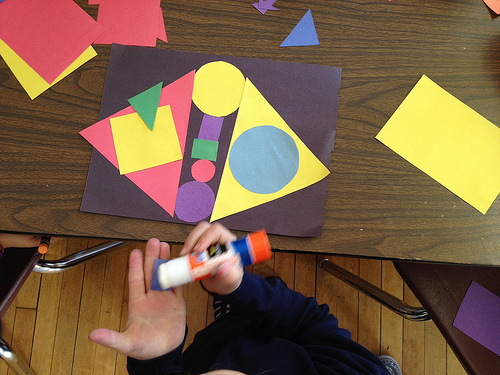
Special Education in the Art Room: Inclusion by Law and Sensitivity by Necessity
[flickr id=”8052613463″ thumbnail=”medium” overlay=”true” size=”original” group=”” align=”none”]
Today at an observation, I got to help out in an eighth grade classroom that happened to have three students with special needs. I saw a few things I liked and a few things I will hopefully be able to prevent in my classroom one day. This got me thinking: how would I have run this class?To start, the Individuals with Disabilities Education Improvement Act (IDEIA, and also known as IDEA), is a federal law that regulates how students with disabilities receive the Free and Appropriate Public Education (FAPE) that they are entitled to in this country. One of IDEA’s requirements, among other things, state that students with disabilities need to be placed in their Least Restrictive Environment (LRE) as often as possible. Put simply, the Least Restrictive Environment is a classroom in which a student with a disability is able to learn with his or her non disabled peers.
Often times, art teachers, and teachers of other “specialties,” are educators of the entire school in an elementary setting, at least in the Chicago Public Schools. Throughout the course of a year, an art teacher will have every student in the school in his or her classroom, and this can include students with various disabilities, if it suites their Least Restrictive Environment. At Columbia, teacher candidates are required to take a class on educating students with disabilities as part of our graduate curriculum. Some of what we discuss in this class are ways to modify our lesson plans to accommodate a particular disability and ways to sensitize non disabled students to their disabled peers.
Here’s what I liked this morning when I observed:
- Two of the disabled students helped the teacher hand out supplies and arrange the still life that the class was drawing.
- They also helped pass out materials. One student was particularly pleased to be able to have a helper role.
- The lesson was modified for the students. The teacher and I were able to start the drawing for two of the students. For the student with the most sever disability, I drew a picture and had him color it in, focusing on picking out warm and cool colors.
Truthfully, I only had one problem with the class, but to me it was a big one: sensitivity. The majority of the class was tolerant of the three students with disabilities, but there was one student who continued to call attention to the boy at his table. As many teachers would probably be able to testify, sometimes there is one student in a class whose behavior and reactions can influence the rest of the class’s behavior. This was that student.
By commenting each time the student made a noise, moved, or otherwise “annoyed” him, he was able to get attention from the students near him in the form of snickering and outright laughter at times. The teacher eventually stopped him and held him back from recess for a talk about causing distractions in class. In my opinion this was not the real problem, and I also felt this situation required immediate response for the student making insensitive comments and the students laughing at these comments. I wanted to pull the student aside myself and ask him how he would feel if he saw someone treating a sibling of his this way. As a guest in the classroom, I was conscious about overstepping my bounds and was unsure if it would have been appropriate for me to do so.
However, responding in the moment to the problem would only be just that: responding. What about preventative measures? Would it be possible to sensitize non disabled students to their disabled peers? The answer is yes, of course. It should be something that is done early and often throughout the school year. I have a couple of ideas for my eventual classroom.
I think a great way to include students with disabilities with their non disabled peers in the art room is through collaborative projects. An example of this would be painting murals and assigning students with disabilities specific and important roles in the mural painting process. Another idea is assigning rotating “buddy” pairs with a disabled and non disabled student so that each non disabled student in the class would be a buddy with each disabled student at least once over the course of each semester. Implementing these ideas would hopefully help non disabled students understand that their disabled peers are an equally valuable part of their classroom, school, and community.
I would love to hear other ideas about how to include students with disabilities with their non disabled peers in the art room. Feel free to leave a comment, as I would like to have several ideas for inclusive activities by the time I am teaching!
